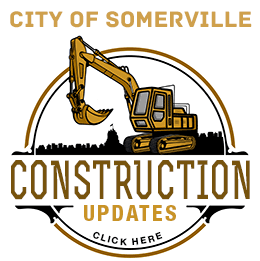
Winter weather is already affecting some parts of the nation, but as an intense winter storm forms off the eastern coast, residents are encouraged to take the storm seriously, and to act now to prepare homes and families for potential impacts.
FEMA, from its headquarters in Washington, D.C., and through its regional offices in Boston, Massachusetts, New York, New York, Philadelphia, Pennsylvania, Atlanta, Georgia, and Denton, Texas, is working closely with federal, state, local, and tribal partners to monitor the storm and potential impacts as severe winter weather is forecast to affect much of the Eastern United States during the next few days.
According to the National Weather Service, a powerful nor’easter is expected to bring snow, ice, rain, and very strong winds to coastal locations of the Southeast U.S., Mid-Atlantic, Northeast, and into New England Wednesday through Friday. The potential exists for strong damaging winds, power outages, tidal flooding, and very cold wind chills. Heavy snow and blizzard conditions are forecast for some areas from New England to the Virginia Tidewater, while coastal flooding and erosion are expected all along the Eastern Seaboard. Snowfall will increase northward from South Carolina into portions of the Mid-Atlantic and northern New England through tonight. Blizzard conditions are possible over eastern Long Island and portions of coastal New England, and also near the mouth of the Chesapeake Bay and Hampton Roads.
When winter storms hit, the first responders are local emergency and public works personnel, neighbors, volunteers, and non-profit organizations, who help provide emergency assistance to protect the public’s health and safety and meet immediate needs. FEMA has pre-staged emergency commodities across the United States should they be needed to support state and local emergency response operations. While there are no requests for federal assistance at this time, FEMA remains ready to support states and tribes in the affected areas as the storm progresses.
Preparedness and Safety Information for the Public
Individuals in the potentially affected areas are urged to have an emergency communications plan, monitor local radio or TV stations for updated emergency information, and follow the instructions of state, tribal and local officials. Download the FEMA mobile app, available in English and Spanish, to set up weather alerts, review preparedness information, safety tips and an emergency kit checklist, and more.
Avoid traveling by car, but if you must, make sure you have an emergency supply kit in the trunk of your car. FEMA encourages families to maintain emergency supply kits both at home and in the car to help prepare for winter power outages and icy or impassable roads.
Extreme cold can be deadly. Stay inside where it is warm, check on your neighbors,and bring pets indoors.
Avoid overexertion when shoveling snow. Overexertion can bring on a heart attack – a major cause of death in the winter.
Get to know the terms that are used to identify weather threats and discuss with your family what to do if watches or warnings are issued.
· A Winter Storm Watch is issued when there is the potential for significant and hazardous winter weather within 48 hours.
· A Winter Storm Warning is issued when a significant combination of hazardous winter weather is occurring or imminent.
· A Blizzard Warning is issued when winds of 35 MPH or greater and visibility is reduced to ¼ mile or less is occurring or expected to occur within the next 12 to 18 hours.
· An Ice Storm Warning is issued when at least ¼ inch of ice is expected.
· A Winter Weather Advisory is issued when 2 to 4 inches of snow, alone or in combination with sleet and freezing rain, is expected to cause a significant inconvenience, but not serious enough to warrant a warning.
For more winter weather preparedness and safety tips, go to Ready.gov/winter-weather.
Home Heating Risks
According to FEMA’s U.S. Fire Administration, home heating is the second leading cause of U.S. home fires, deaths, and injuries. Home fires occur more during the winter than any other season, and heating equipment is involved in one of every six reported home fires, and one in every five home fire deaths.
· Make sure your electric space heater has an automatic shut-off, should it tip over.
· Use your fireplace safely; always use a metal or heat-tempered glass screen when operating your fireplace. Keep a fire extinguisher nearby.
· Do not use your stovetop range as a heat source.
· Carbon monoxide is an odorless, colorless gas created during the burning of fossil fuels, such as gasoline, wood, or propane. All fuel-burning equipment should vent outdoors.
· Have operational, smoke detectors and carbon monoxide alarms in your home.
· Only run portable generators outdoors in well-ventilated areas. Keep them away from all doors, windows, and vents to indoor spaces.
Flood Risks
· There is the potential for flooding with this storm. Driving through a flooded area can be extremely hazardous and almost half of all flash flood deaths happen in vehicles.
· When in your car, look out for flooding in low-lying areas, at bridges and at highway dips. If you encounter flood waters, don’t attempt to pass through water – turn around, don’t drown.
· If you live in an area likely to experience flooding from this storm and have a National Flood Insurance Program (NFIP) flood policy, you may be eligible for reimbursement for actions taken to protect your property. Call your insurance agent to find out more.















Reader Comments